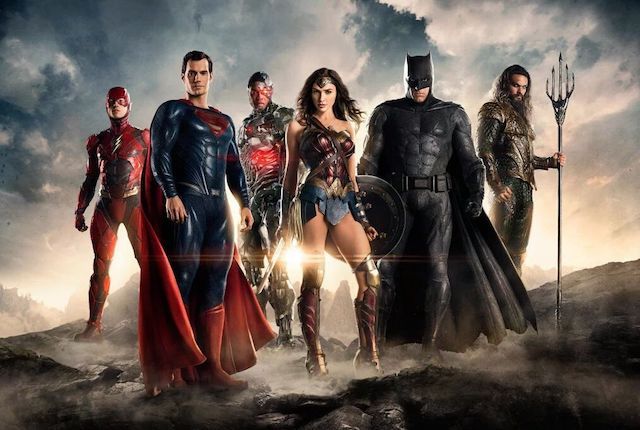Superhero movies aren’t exactly famous for female representation. Generally, that representation comes in the form of leather swimsuit-esque costumes and little else. In 1985, Alison Bechdel wrote a comic strip called The Rule, which appeared in Dykes to Watch Out For. The Rule became the basis for what we know of now as the Bechdel Test: simply, it’s a test for gauging female representation in a film. There are three rules. First, there must be at least two named women in it. Second, those women have to talk to each other. And third, their conversation has to be about something besides a man. So, of course, we decided to create our own DC movies Bechdel Test rankings. The results may actually surprise you.
Batman Returns (1992)

Batman Forever (1995)

Green Lantern (2011)

Batman: The Movie (1966)

Superman (1978)

Superman Returns (2006)

Batman Begins (2005)

Batman (1989)

The Dark Knight Rises (2012)

Batman & Robin (1997)

1997’s Batman & Robin is arguably the biggest turd in DC’s entire live action lineup. Actually, it’s probably the worst thing DC has ever created. So it’s no surprise that although it does feature at least two named female characters (Batgirl, Poison Ivy, Gossip Gertie), and they do talk to each other, their conversation is limited to the (very male) Caped Crusader. Two out of three is still a failure.
Batman v Superman: Dawn of Justice (2016)

This one sits right on the line. While the theatrical release includes a conversation between Martha Kent and Lois Lane, that conversation (the only one between two women) is about Lois’ relationship with Clark Kent. Meanwhile, in the Ultimate Edition, Jenet Klyburn and Lois have a fairly in-depth conversation about science stuff (no man there!). Two or three out of three, depending on how much of your valuable time you want to turn over to Zack Snyder’s “vision.”
Superman II (1980)

Another dubiously successful film, 1980’s Superman II features more than one named female character (Lois Lane, Ursa, Eve, etc.). Lois and Ursa do talk to each other, but the topic of their conversation is mostly about Superman. So technically, two out of three, because a guy still manages to butt in on a perfectly fine rapport.
Man of Steel (2013)

Alright, so 2013’s Man of Steel features several named women, but they only sort of have conversations with each other. The interaction between Faora and Lois is one-sided, while the one between Lois and Martha is about Clark being an alien (so about a man, but only kind of). Three out of three, because they both count on technicality, but the spirit of the test is a failure in the film.
Superman IV: The Quest for Peace (1987)

Lois Lane and Lacy Warfield manage to have a brief conversation in the middle of a work meeting. Sure, it’s maybe three lines long. And sure, it’s mostly insulting: “Excusez-moi, your spoiled-ness…” But it’s there. And we’re counting it. Three out of three, because insults are still better than talking about Superman.
Superman III (1983)

While the Batman franchise seems weighted down in misogyny, the Superman franchise looks like it’s kind of got its shit together. Sort of. Superman III has multiple named female characters, and at least two of them have separate conversations about stuff that isn’t a man. Like, you know, pushing buttons and stuff. Three out of three — it’s close, but it gets there.
The Dark Knight (2008)

Hands down the best of Nolan’s Dark Knight trilogy, The Dark Knight actually passes the Bechdel test, but only by a very slight margin. Detective Ramirez and Barbara Gordon have a phone conversation, and the conversation regards the safety of Gordon’s family. Problem here is that Ramirez is under gunpoint, and her words are being dictated by a man. So a generous three out of three, because we f—ing love this movie otherwise.
Suicide Squad (2016)

So. Many. Women. Named. Amanda Waller, Harley Quinn. June Moone. Katana. And yes, some of them manage to actually speak to each other. About things like espresso machines, which have nothing to do with men. But the talks are brief (which is even a stretch to say), so three out of three, but just barely.
Catwoman (2004)

It pains us to say this, but 2004’s Catwoman manages to do something really right. Patience Phillips and Laurel Hedare are both such poorly written characters (although one’s the CEO of a major cosmetics company, so female empowerment and all that!). But, they do talk to each other about things other than men, in whatever non-sexy, sexy way the writers tried to come up for them. Three out of three, but with the understanding that actual dialogue plays no part in this.
Justice League (2017)

If you managed to stay awake for this one, you’ll for sure remember the scene in which Menalippe and Hippolyta (both named characters) discuss the sacred warning fire. They mention men as a group, as opposed to any specific man, so the conversation counts. Three out of three, because the Amazons are f—ing badass.
Watchmen (2009)

While we’d like to fault Zack Snyder for making terrible movies in general, we have to at least give credit where credit is due. Sally and Laurie (both named characters) do discuss Laurie’s upbringing, and while a man is a part of that conversation, he isn’t the whole part. So three out of three — strained parent/child relationships make for serious discussion.
Wonder Woman (2017)


